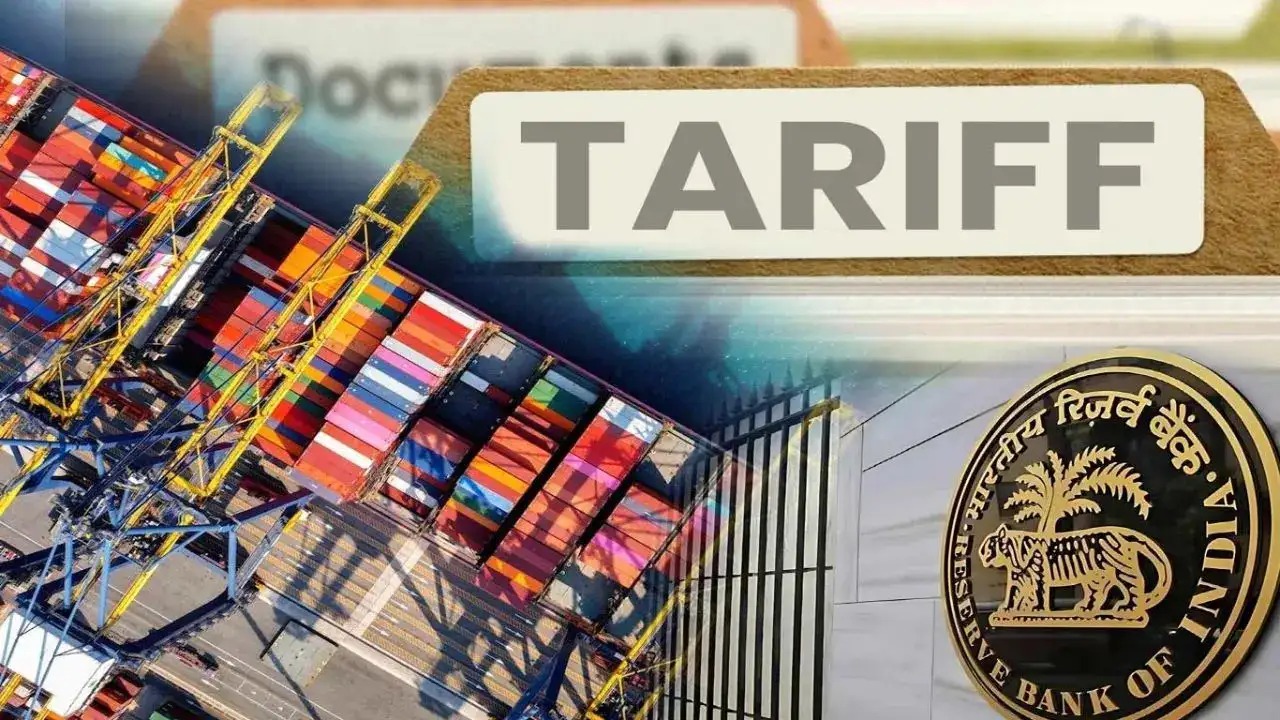
India faces a critical economic moment in August 2025. On one hand, the Reserve Bank of India (RBI) is set to maintain its benchmark rate at 5.50% during the upcoming policy meeting on August 6. On the other, steep U.S. tariffs on Indian exports threaten growth and financial stability.
This article explains the situation clearly: why the RBI paused, how tariffs affect India, and what it means for markets and borrowers.
RBI’s Decision: Staying Static for Now
Economists expect RBI to keep the repo rate unchanged at 5.50%, based on an Economic Times poll where 12 out of 16 experts advised holding rates steady. Only four experts supported a 25 basis point cut immediately. On June 6, RBI had already cut rates by 50 bps, and today’s move signals a cautious approach toward new adjustments. The RBI plans to watch the impact of previous cuts before changing policy again.
RBI Governor Sanjay Malhotra reiterated that future decisions depend more on forecasts than current inflation or growth. This way the central bank avoids premature action.
Why U.S. Tariffs Matter to India
The U.S. imposed a 25% tariff on Indian goods starting August 1, 2025. These tariffs target key export sectors-such as pharma, engineering goods, and auto parts-and directly threaten India’s export revenue. Analysts estimate these tariffs could reduce India’s GDP growth by up to 40 basis points.
The tariffs also damage investor confidence. Foreign portfolio investors withdrew over ₹17,700 crore from India in July. This outflow, combined with trade uncertainty, helped push the rupee down to around ₹87.54 per US dollar, near its weakest level since February.
Inflation Eases-but Growth Slows Too
India’s retail inflation dropped to a six-year low of 2.10% in June, aided by falling food prices and favorable base effects. That low inflation gives RBI room to cut rates in the future-but only if growth remains healthy.
However, business confidence dipped in July despite strong manufacturing numbers. Experts worry that weak demand and export pressures may slow growth further. That is why most economists support holding rates steady in the August meeting.
Rupee Remains Vulnerable
The rupee closed near ₹87.54 last week, showing a 1.2% weekly fall amid tariff worries and foreign fund outflows. Analysts expect it to remain in the ₹87.00–87.80 range in the coming days. RBI may intervene through its maturing $5 billion swap transactions, but they face limits in stabilizing the currency while preserving liquidity.
Market Impact: Caution in the Air
India’s stock markets entered their worst five-week losing streak since 2023, with Nifty and Sensex dropping sharply. Analysts blame weak corporate earnings, foreign outflows, U.S. tariffs, and uncertainty over RBI’s monetary strategy for the downturn.
If RBI surprises with a rate cut in September-especially if growth data weakens-markets could rally quickly. That scenario currently offers the only hope for a positive turnaround.
What This Means for Borrowers and Businesses
Citizens:
- Home, auto, and personal loan borrowers may hold steady in interest rates for now. RBI will only cut further if slower growth becomes more visible.
- If inflation stays low, future rate cuts may reach consumers over time.
Businesses:
- Exporters face higher costs due to U.S. tariffs and lower realisation in dollar terms.
- Companies may delay hiring or investment amid trade uncertainty.
Foreign Investors:
The weak rupee and volatile markets may deter FII inflows. Many are shifting funds to safe assets or defensive sectors like FMCG and telecom.
RBI’s Policy Outlook: Waiting for Clarity
RBI shifted its policy stance to “neutral,” signaling neither eagerness to cut nor raise rates. Policymakers want to monitor new datae-specially around growth, inflation, and global risks-before making changes.
Governor Malhotra emphasized that India’s position as one of the fastest-growing major economies remains unchanged, despite external shocks. The central bank also pledged to remain flexible on currency, addressing volatility without setting a fixed exchange rate mindset.
What Comes Next?
The key events to watch are:
- RBI’s official policy statement on August 6
- Clarity on U.S.-India trade negotiations
- Updates on FPI flows and rupee interventions
- Next rounds of GDP and inflation data
If RBI waits until September or later to cut rates, exporters and investors may face prolonged pressure. But a surprise cut could boost business sentiment and markets quickly.
Conclusion
India stands at a delicate juncture. With inflation bottoming at 2.10% and consumer growth slowing, the RBI must walk a fine line. U.S. tariffs cast a large shadow on exports and the rupee. Markets expect RBI to hold for now-but the door to cuts in September remains open if growth weakens further.
Consumers, businesses, and investors must stay alert. Monitor policy updates, global trade signals, and macro data closely. This week-and the next few months-will shape how India navigates global shocks and keeps its growth momentum intact.




